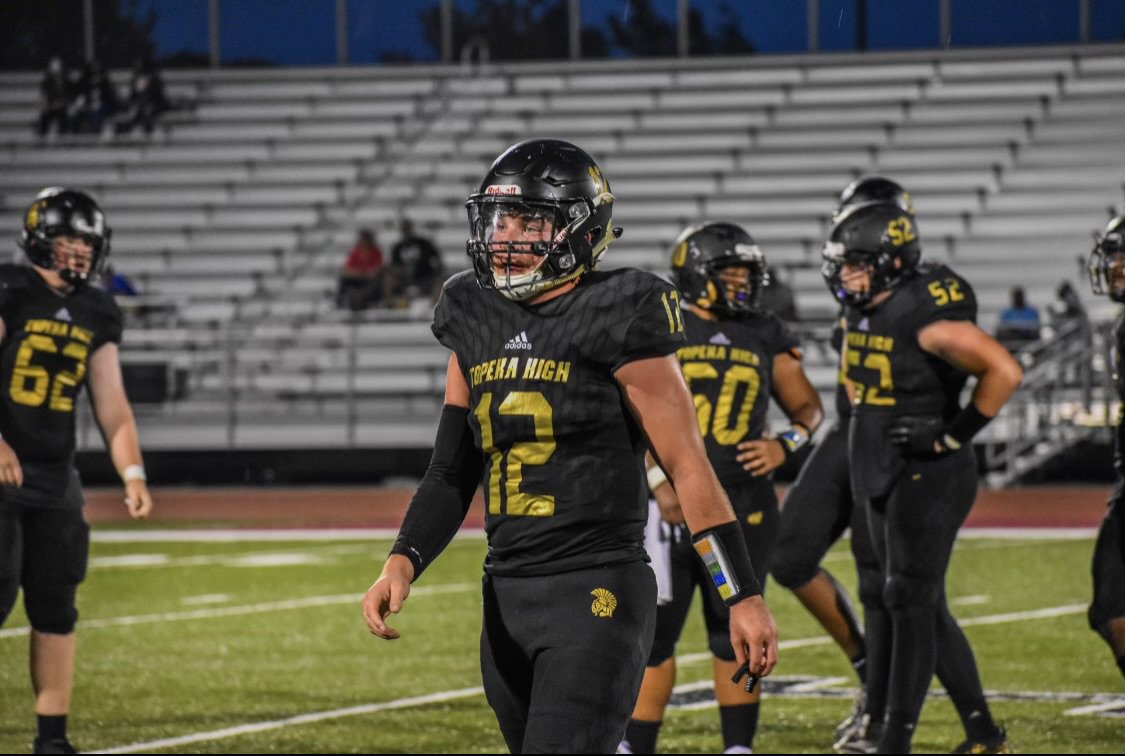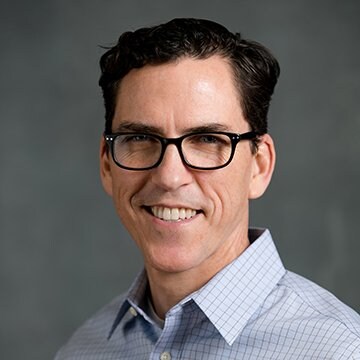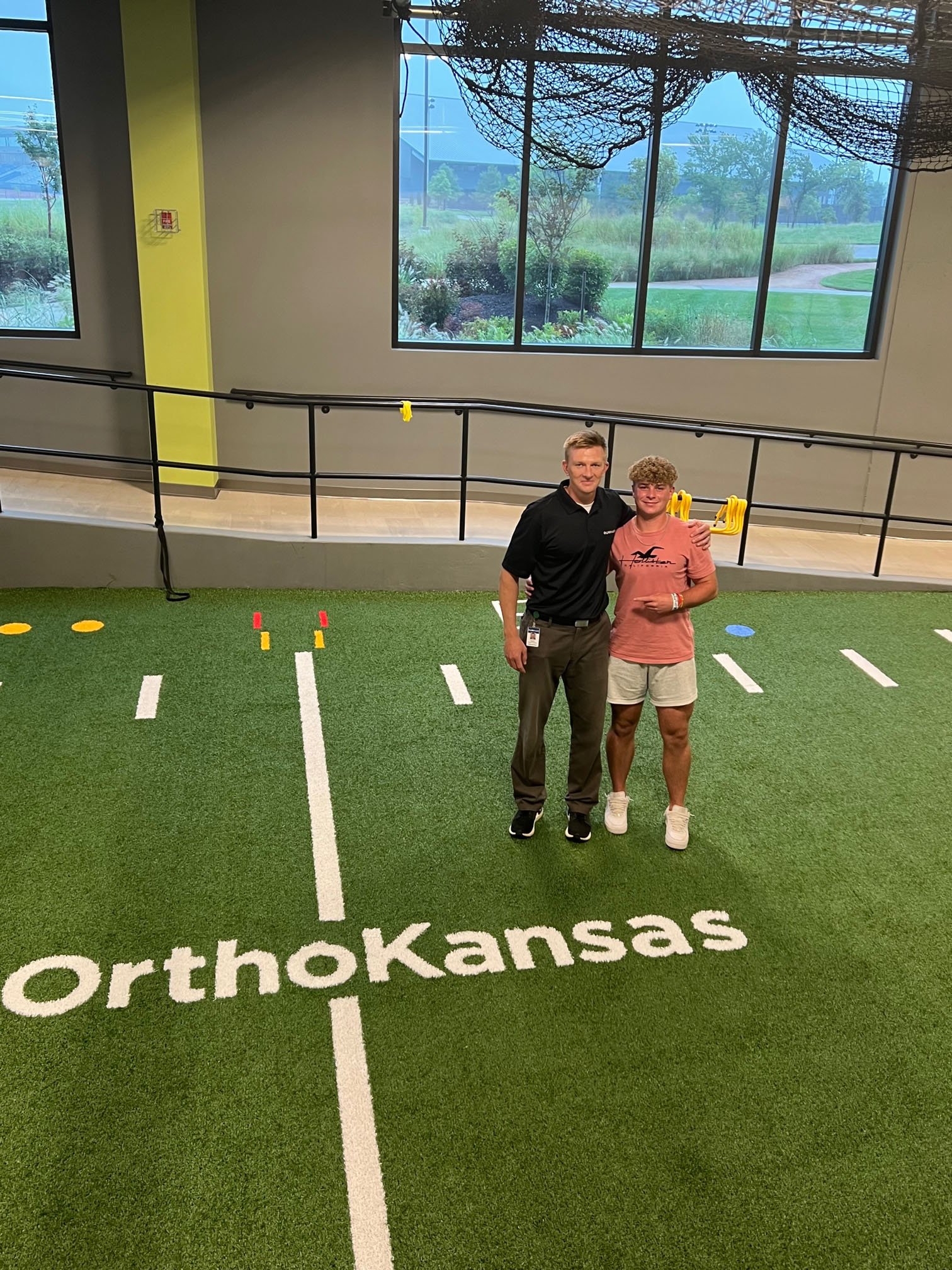
Peyton Wheat: Returning to the field
During summer break, you might expect to find high school seniors taking it easy – hanging out with friends by the pool and getting ready for their final year. Not Topeka High quarterback Peyton Wheat. His main focus has been getting healthy after suffering a shoulder injury in a game last year against Topeka Seaman.
“When I got tackled, I landed on my shoulder and dislocated it. When I stood up, it popped back in and then I went to punt the ball, caught the snap with one hand and then went to the sideline,” he said. “I started throwing and the pain was tolerable, so I went back in for a quarter.”
Peyton scrambled during a play and threw the ball 30 yards out of bounds before his shoulder dislocated again. Once he stood up, he immediately went back down to the ground and knew something was wrong.
While he was able to finish out the season for Topeka High, Peyton turned to OrthoKansas for a diagnosis. Family friends who worked in athletic training were fairly certain something was wrong with the labrum in his throwing shoulder.
More than meets the eye

Douglass Stull, MD
Douglass Stull, MD, is an orthopedic surgeon at OrthoKansas specializing in shoulder care. He treats a variety of conditions for athletes with shoulder throwing injuries, including athletes from the University of Kansas. When Peyton came in for care, Dr. Stull was prepared.
“Peyton presented with pain, shoulder instability and the inability to throw the football effectively. He also displayed a lack of shoulder proprioception which means that he had the feeling that his shoulder was slipping out of place. It’s a feeling that can be subtle, but it’s designed to protect you,” he explained.
Dr. Stull ordered an MRI to determine the extent of the injury to Peyton’s shoulder. When the images came back, it was just as he’d anticipated – a labral tear to the back of the shoulder.
“Any labral injury to a throwing athlete is career-threatening,” Dr. Stull said. “It’s not a life-altering injury but without intervention, Peyton wouldn’t be able to play quarterback at a high level. He would have to have moved to another position that didn’t involve throwing all the time.”
Based on his injury, Dr. Stull recommended surgery as the best course of treatment. Peyton was wheeled into the operating room just a few days before Christmas. Once the surgery began though, the team encountered something unexpected – an injury that the MRI hadn’t picked up.
“We only saw one injury on the imaging, so to find a ligamentous tear together with a labral tear was a surprise and not very common. Fortunately, it was one that we could also address then and there,” Dr. Stull explained.
Peyton didn’t know anything about the second injury until he woke up. He asked about the labrum repair and his mother shared that the team repaired it and the unexpected tear at the same time.
“I didn’t really process that I’d also had a capsule tear until a day or two after surgery,” he said. “My mentality didn’t change much because I trusted my team and I knew I was going to get back to where I needed to be successful on the field.”
The road through rehab

Justin Rohrberg and Peyton Wheat
Before undergoing surgery, Peyton wanted to be as prepared as possible. He turned to the experts at LMH Health Therapy Services at the West Campus for help. Physical therapist Justin Rohrberg worked with Peyton for a few weeks prior to his surgery.
“When a patient comes to us for pre-op physical therapy, it allows us to establish their baselines using the advanced technology we have,” Justin explained. “We used our isokinetic testing machine – one of only a few available in Kansas – to evaluate the movement, strength and stability in both of Peyton’s arms and then track his progress throughout rehab.”
Peyton hopped back into therapy the week after his surgery. He began therapy much like anyone who wasn’t going back to throwing following shoulder surgery, with lower impact exercises to improve his range of motion. As he continued to progress, Justin tailored the sessions to incorporate more of what Peyton would experience as a throwing athlete.
“We worked on lots of overhead strength and stability exercises for the shoulder joint and scapula. This included intertwining lower extremity work because that’s where much of the power for the throwing motion comes from. I encouraged Peyton to keep up his leg strength as we continued to work on his shoulder,” Justin said. “We also began to incorporate tasks that simulated the experience that Peyton would experience during a football game such as rolling on the ground and pushing up.”
As rehab progressed, Justin continued to monitor Peyton’s progress using the isokinetic machine as well as the team’s newest piece of technology – force plates from VALD Performance. OrthoKansas and LMH Health Therapy Services is the only location in the region boasting this technology for everyday athletes and orthopedic patients.
Peyton underwent an athletic shoulder test using the force plates. This meant that he would lie flat on the ground, place his arm on the plate and push through his range of motion. He’d then repeat the test using the other arm.
“Being able to use the force plates gave us the opportunity to collect more data, letting us know more about Peyton’s strength. Comparing that to normative data from uninjured people in the same age group helped us to determine where he was at in recovery,” Justin explained.
Mental recovery
Overcoming a physical injury is only part of the rehab process. Fear can play a big part for athletes of all ages and abilities seeking to return to their sport.
“Confidence is a huge thing to get back following surgery and rehab,” Dr. Stull said. “It’s normal to have some anxiety. Until you take that first hit, you don’t know how you’re going to perform.”
Peyton continues to work to improve through exercises and stretches to strengthen his external rotation. He’s also working with a throwing coach each week to get back into the swing of things.
“My mechanics were a mess and mentally, I didn’t trust my shoulder. The mental aspect of an injury can be very hard. He’s helped me with both of those so I can get back on the field,” he said. “I’m lucky to have him and the therapists at LMH Health in my corner.
With help from Dr. Stull, Justin and his coach, Peyton is confident that he’ll be ready for the upcoming football season. At his first game on September 3 against Maize High, there will be some extra cheerleaders in the stands. Justin and other members of the therapy team plan to be there to cheer him on.
“I knew from the start that OrthoKansas and LMH Health were the right place for this journey. I trusted Dr. Stull, Justin and the rest of the staff. They never put doubt in my mind that I wasn’t going to be back on the field,” Peyton said. “Without them, I wouldn’t be close to where I am physically or mentally. The environment there is like no other – I wouldn’t want to be anywhere else.”